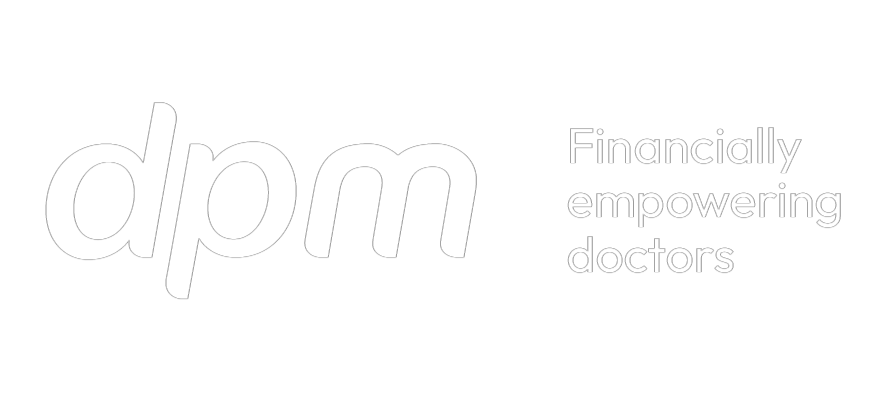Want to know a mortgage broker’s secret to securing your loan as a medical professional? Scratching your head about borrowing money for your first home, investment or private practice and don’t have the time to research? Let your DPM home loan broker sort out the facts from fiction.
Myth #1: Your current bank will reward your loyalty with a good rate
Fact – Loyalty Shmoyalty. One could argue it no longer exists. The bank that holds your savings or current home loan will not always reward you with the best mortgage deal.
While some banks do reward loyalty, it always pays to shop around in this competitive environment. A little legwork by your mortgage broker can save you thousands. Some lenders are also throwing money (anywhere from $2k-5k) to win new home loan customers.
Often it also takes the “threat” of refinancing to get your current lender to scrummage around and provide you with their best offer to keep your business. It more often than not costs more to win new clients than it is to retain existing ones. Get your mortgage broker to do some hunting around for you.
Myth #2: You can easily afford and demonstrate your borrowing capacity on today’s rate
Fact – Maybe. But…
Effective Rate versus Bank Benchmark rate
Put simply, while your existing or proposed loan may be at a rate of say 5.5%, the Australian Prudential Regulation Authority (APRA) requires the minimum interest rate buffer for lenders to use when assessing the serviceability of home loan applications at a 3% margin so say 8.50%.
This ensures that banks are lending to borrowers who can afford the level of debt they are taking on not just today but also into the future should rates rise. And given the latest spate of rate increases by the Reserve Bank, it is best not to overextend yourself on your mortgage.
Debt to Income Ratio
A debt-to-income ratio compares the amount of debt you have to your overall income and generally needs to be under 6-8 times. Your cover level combined with how much your loan value ratio is may impact your home loan rate.
Myth #3: ATO debt, HELP debt and credit card don’t have much impact on borrowing capacity
Fact – Comprehensive credit reporting ensures lenders have ‘shared’ access to all your liabilities across all institutions including the government. So owing the government money is considered a liability which needs to be accounted for.
HELP Debt
If a client earns $200kpa but has a “small” HELP debt of say $40k, their annual repayments towards this debt is approximately 10% of their income or $20,000. While the debt is relatively small, the annual commitment is assessed on the level of income rather than the amount owing and this in turn erodes their borrowing capacity significantly. For some clients it may be prudent to consult their tax adviser and consider paying the debt out earlier if seeking to apply for a loan depending on how their borrowing capacity looks like with that annual commitment.
ATO Debt
Similarly, owing the government back taxes will appear on tax portals and in some cases where payment arrangements have not been entered into, this debt can also be recorded on the customer’s credit report. If there is an ATO payment plan in place, the monthly repayment is classified as an expense by lenders and would need to be disclosed and accounted for when assessing borrowing capacity. Having foresight from your accountant regarding future tax obligations can assist you to better plan and even fund them.
Credit Cards
One of most common misconceptions is that if you pay the balance on your card to zero each month or just have the occasional card that you only use when travelling and for the remainder of the year these cards sit in the back of your wallet that they are not considered liabilities. The fact is lenders will assess your borrowing capacity based on the limits of your debts (mortgages, credit cards etc) and not the balance of these facilities. Paying off your $30k credit card each month and not accruing any interest charges is great but it is still considered a $30k liability when it comes time to having a loan assessed. So before applying for a home loan, review any cards you don’t use. And if you do use them, maybe look at reducing their limits as much as you possibly can, or chat to your lender about it! Oh and don’t forget your Buy Now Pay Later (BNPL). Zip Pay, After Pay etc like your credit cards are still liabilities.
Myth #4: You need a 20% deposit plus stamp duty to buy a home
Fact – As a medical professional there are lenders willing to lend you 90-95% of your home purchase without lender mortgage insurance. There are also some lenders that can lend 100% of your purchase using a family guarantee (usually from parents) as security which is supported by a mortgage or second mortgage over the parent’s home or investment property, assuming they have sufficient equity. In some instances, DPM may be able to assist you in securing 100% finance depending on your personal circumstances. With the high costs of renting and the difficult road to saving for a deposit you may be able to access home ownership earlier than you think.
Myth #5: Cheapest loan is the best
Fact – Umm. Maybe. While you may pay lower interest, the cheapest loan may not always be the best. You need to consider the terms of the loan before making a decision, as some terms will be more attractive, such as:
- Having an offset account linked to your home loan or the option to make additional repayments and redraws for free can help you save significantly over the life of the loan and pay it off faster.
- Being able to borrow more at a slightly higher rate.
- Loan that requires repayment in a short time frame with a low interest rate vs loan with a marginally higher interest rate and a more attractive / longer repayment period that will have a lower monthly repayment overall.
- Lender Credit Policy is always crucial when deciding where to apply, as each has different credit criteria regarding how they assess base income, overtime, self employed income, loan value ratio against certain property sizes and locations.
- Timeliness of credit decision – some lenders can provide a pre-approval within 48 hours while others can take 4-6 weeks.
- Relationship manager with health specialisation.
Myth #6: Find a house, then worry about a mortgage
Fact – This is bad advice at any time and will create unnecessary stress to both you, your broker and your lender and in some instances, should finance fall through you may risk losing your deposit.
Get pre-approved for a mortgage before you start seriously looking at homes. A pre-approval means that the mortgage lender has reviewed your financial information and is willing to lend you up to a specific amount of money. It will generally last 3 months but be mindful that in a rising interest rate environment your borrowing capacity will erode each time there is a rate increase.
To understand your options better, we recommend speaking with your accountant or a mortgage broker. Click here if you’d like to arrange a no-obligation chat with a Consultant from the DPM Lending team.
Disclaimer: This information has been provided by DPM Lending Pty Ltd ACL number 374850 and is general in nature so it may not be right for your personal circumstances. DPM Financial Services recommends you obtain advice concerning specific matters before making a decision.










